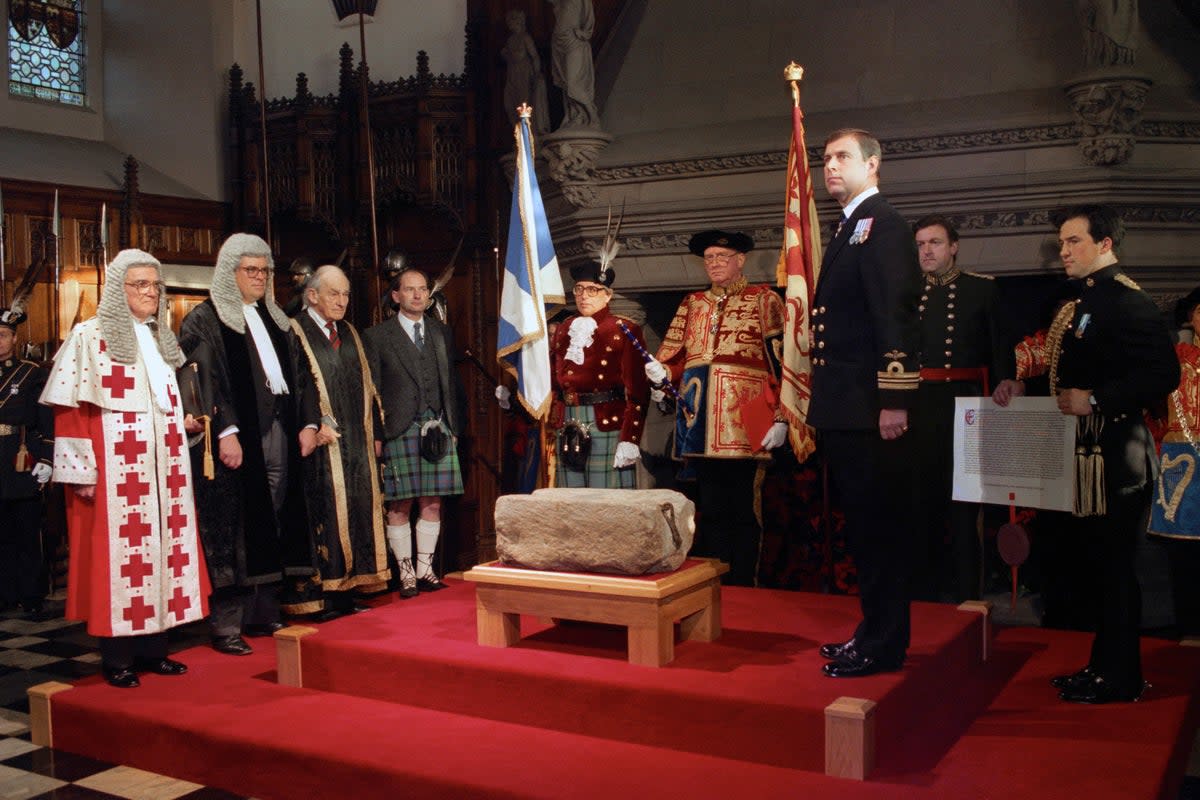Stone of Destiny shouldn’t go to Westminster for coronation, says son of man who removed it

The son of the man who famously smuggled the Stone of Destiny back to Scotland from Westminster Abbey says his father would not want it to be returned to London for the King’s coronation.
Ian Hamilton, who died last year, broke into the abbey in 1950 and removed the stone, alongside a group of students.
The stone was used to inaugurate Scottish royalty for centuries, before being removed from the country by King Edward I in 1296.
It is currently on display in Edinburgh Castle after being officially returned to Scotland in 1996.
However there are plans for the stone to be moved to Westminster Abbey for the coronation, with a guarantee it will return to Scotland afterwards.
Ian Hamilton’s son Jamie told the BBC: “I think his view would be, it’s ridiculous.”
He added: “If people want to be crowned on it they should come to Scotland and be crowned on it. I think that would be his standpoint.”
Historic Environment Scotland are the custodians of the ancient stone, which is displayed alongside Scotland’s crown jewels.
Head of collections Kathy Richmond told the broadcaster: “We have a royal warrant which says that the stone is to be kept in Scotland and it’s to be transported back to Westminster Abbey for any future coronation.”
Earlier this month former first minister and Alba Party leader Alex Salmond said the stone should not be used in the King’s coronation.
Mr Salmond admitted it was not his “most serious policy” but that the Scottish Government should refuse any request for the stone, due to the refusal to allow a second independence referendum.
Iain Hamilton was one of a group of four students that stole the Stone of Destiny, also called the Stone of Scone, in 1950 just a few days before Christmas.
The students, who were members of the Scottish Covenant Association that supported home rule, broke into Westminster Abbey on their second attempt by going through a works yard and entering at Poet’s Corner.
When grabbing the stone the group accidentally dropped it causing the stone to break in two.
The group was then nearly discovered by a policeman as they loaded the two pieces into two Ford Anglias they had driven down from Scotland. Iain and another member pretended to be embracing to create a distraction and avoid suspicion.
With one car sagging under the weight of the stone the two pieces were abandoned in Kent and the Midlands.
Iain and his friends returned to bring them up to Scotland two weeks later. A stonemason and nationalist politician, Robert Gray, was then hired to mend the stone.
The group finally returned the stone in April 1951. The police were given a message and found the stone at High Altar at Arbroath Abbey, where the Declaration of Arbroath assering Scottish nationhood was made in 1320. It returned to Westminster in February 1952.
Following a police investigation all but Iain eventually confessed to their involvement but were never prosecuted because of worries about political controversy. As the story came out the students had quickly become enormously popular with the Scottish public.


